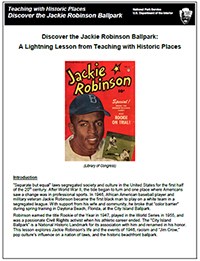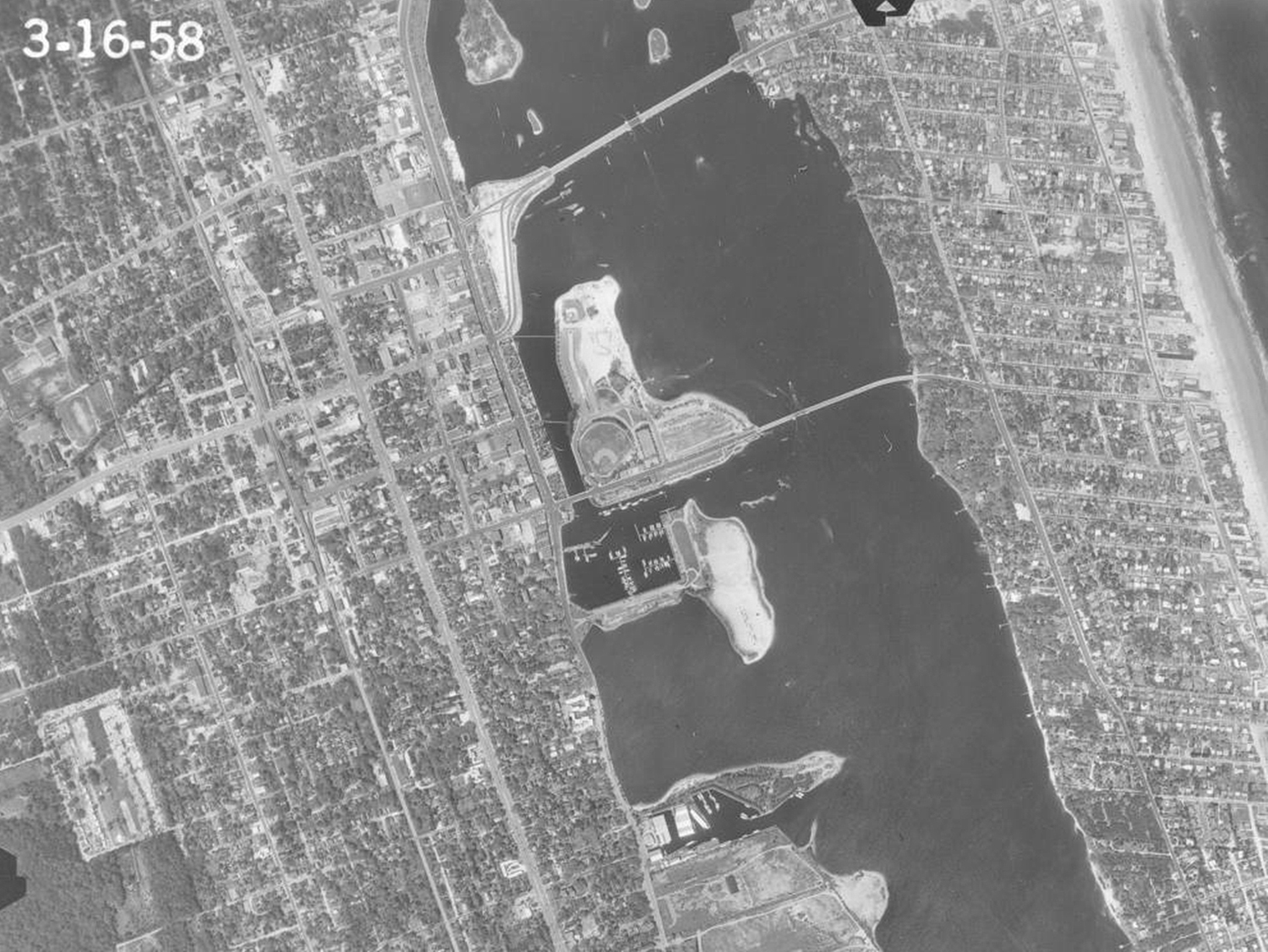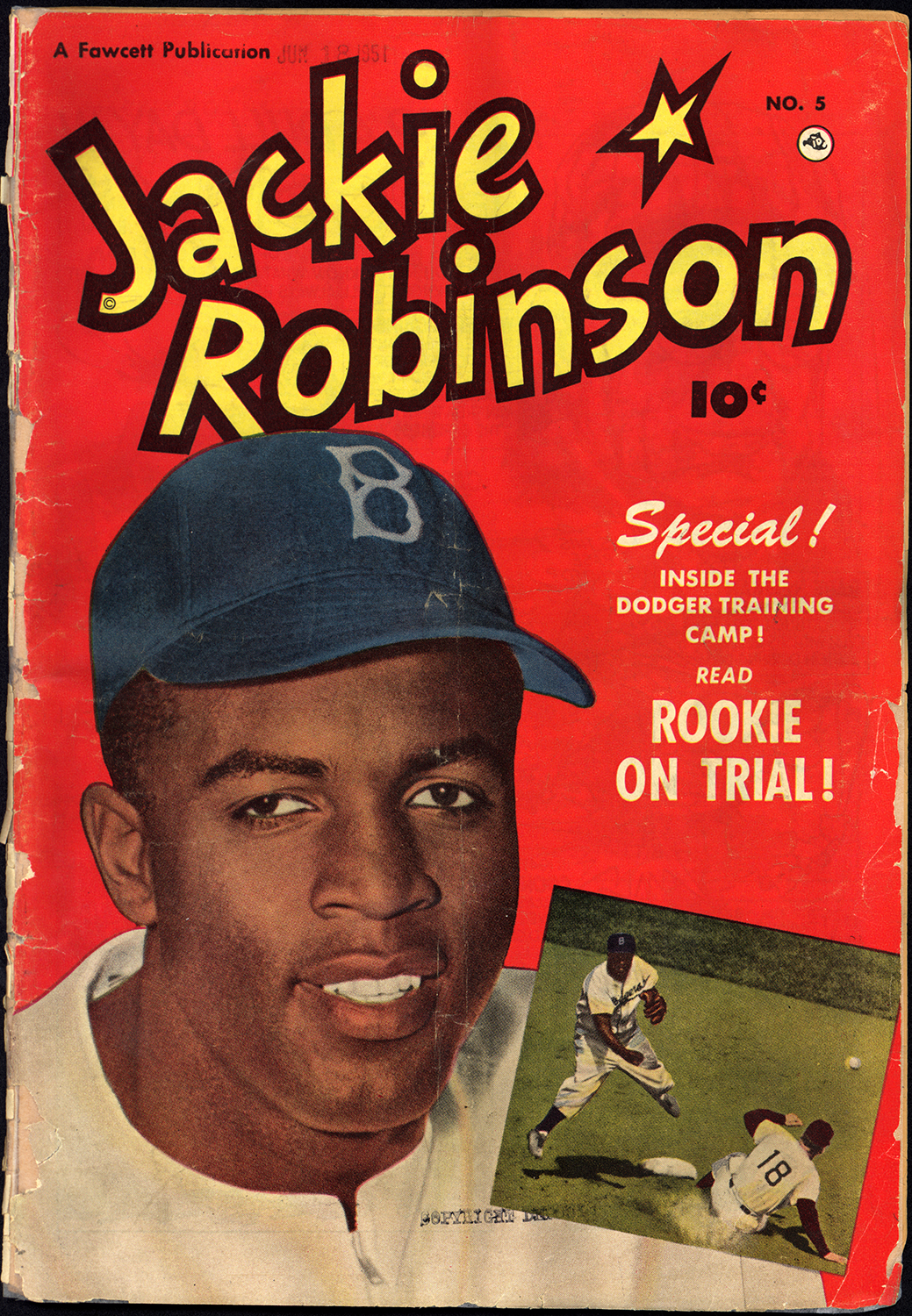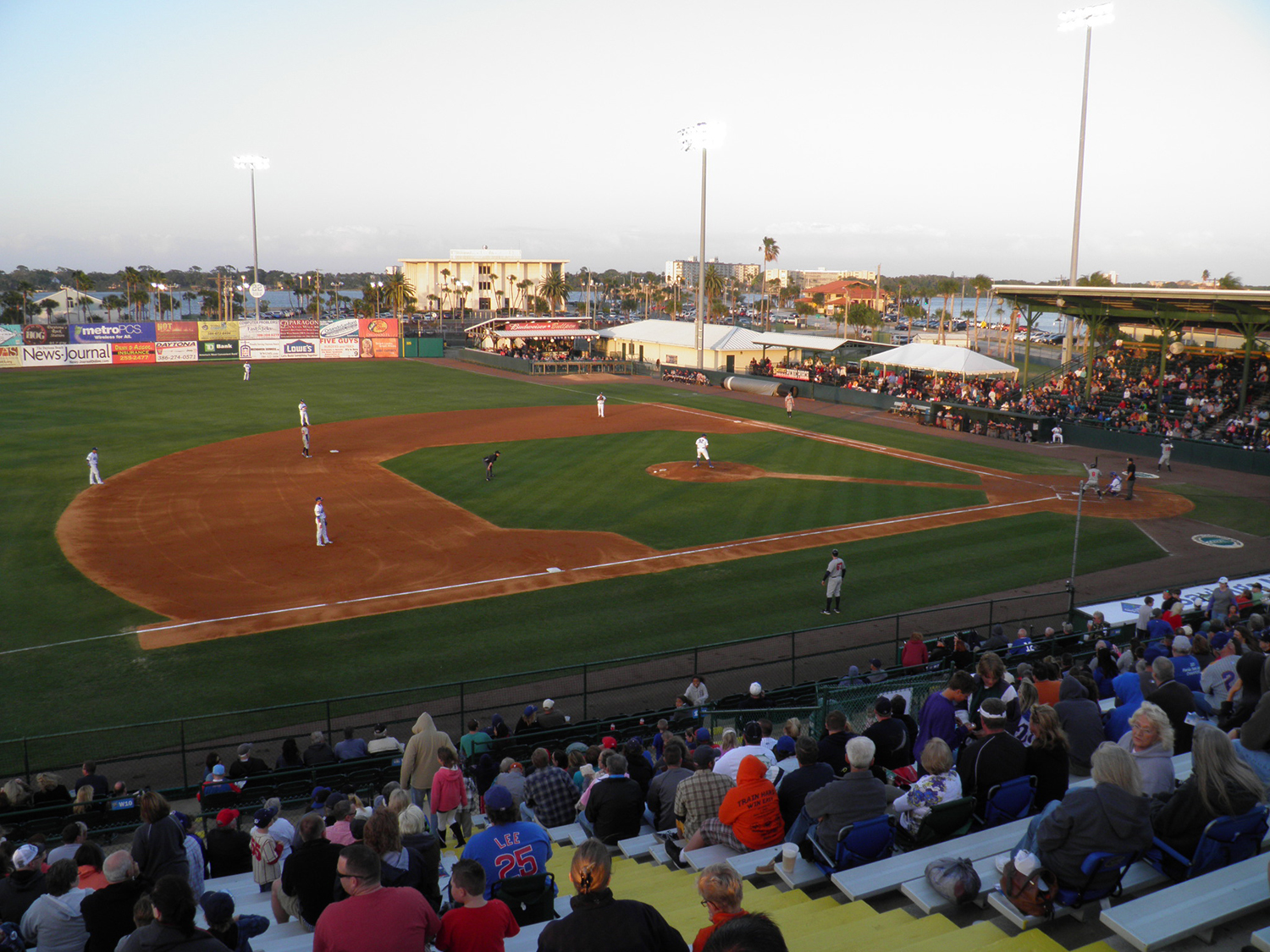
(Featured illustration courtesy Library of Congress)
Contents
| Introduction
| Where it Fits Into the Curriculum (Objectives and Standards)
| Materials in the Lesson (Readings, Maps, Visual Evidence)
| Post-Lesson Activities
| More Resources
| About
How can sports and popular culture influence public opinion?
“Separate but equal” laws segregated society and culture in the United States for the first half of the 20th century. After World War II, the tide began to turn and one place where Americans saw a change was in professional sports. In 1946, African American baseball player and military veteran Jackie Robinson became the first black man to play on a white team in a segregated league. With support from his wife and community, he broke that “color barrier” during spring training in Daytona Beach, Florida, at the City Island Ballpark.
Robinson earned the title Rookie of the Year in 1947, played in the World Series in 1955, and was a passionate Civil Rights activist when his athletic career ended. The “City Island Ballpark” is listed on the National Register of Historic Places for its association with him and renamed in his honor. This lesson explores Jackie Robinson’s life and the events of 1946, racism and “Jim Crow,” pop culture’s influence on a nation of laws, and the historic beachfront ballpark.
Where it Fits into the Curriculum
This lesson can be used in U.S. history, social studies, and other curricula that examine African American history and civil rights in the United States following World War II.
Time Period: Mid-20th Century, Civil Rights Era
Objectives
2. To explain how American society and law may be affected by popular culture, like sports;
3. To complete a creative arts project about the Civil Rights movement OR To identify a local African American historic site and research its significance.
National Standards for History, Social Studies, and Common Core
This lesson relates to the UCLA National Center for History in the Schools National History Standards:
This lesson relates to Thematic Strands from the National Council for the Social Studies' National Standards:
• Theme II: Time, Continuity, and Change
• Theme III: People, Places, and Environments
• Theme IV: Individual Development and Identity
• Theme V: Individuals, Groups, and Institutions
• Theme VI: Power, Authority, and Governance
• Theme X: Civic Ideals and Practices
This lesson relates to the Common Core Standards in History/Social Studies (6-8, 9-10, 10-11):
• CCCSS.ELA-Literacy.RH.6-12.1
• CCCSS.ELA-Literacy.RH.6-12.2
Integration of Knowledge and Ideas
• CCCSS.ELA-Literacy.RH.6-12.7
See the Full Lesson (PDF) for details about how the these Standards and Themes relate to the lesson. Search our Lesson Plans by National History Standards or Lesson Plans by Social Studies Standards to identify lessons that correspond with the eras and themes you want to teach.
Materials Found in the Full Lesson
Accompanying Question Sets are paired with all materials in the Full Lesson (PDF).
• Map: Orients the students and encourages them to think about how place affects culture and societyMap 1: Aerial Photographic Map, Daytona Beach, Florida, March 13, 1958.
• Text: Primary and secondary source readings provide content and spark critical analysis.
Reading 1: Jim Crow, Jackie Robinson, and City Island Ballpark.
• Visual Evidence: Students critique and analyze visual evidence to tackle questions and support their own theories about the subject.
| Map 1: Aerial Photographic Map, Daytona Beach, Florida, March 13, 1958. | Illustration 1: Front Cover of Jackie Robinson Comic Book, 1951. |
 |
 |
| Photo 1: Daytona Cubs vs. Brevard County Manatees, at Jackie Robinson Ballpark in Daytona Beach, April 6, 2013. | |
|
|
|
- Activity 1: Arts, Sports, and Civil Rights: Hold a Jackie Robinson Memorial Game
- Activity 2: African American Heritage in Your State
Use this longer version with more materials to cover additional topics related to Jim Crow, Daytona Beach, and Jackie Robinson. Play ball! This lesson uses the Daytona Beach ballpark where Jackie Robinson broke baseball's color barrier to explore racism and sports in American history. A Field of Dreams is free and available here.
Jackie Robinson Ballpark and Museum
This lesson is based on the National Register of Historic Places registration files for Jackie Robinson Ballpark, formerly known as Daytona City Island Ballpark, (with photos) and other sources. Jean West, an education consultant, wrote the longer, classic edition of this lesson in 2015 and it was redeveloped in the Lighting Lesson format in 2017. Discover the Jackie Robinson Ballpark: A Lightning Lesson from Teaching with Historic Places was edited by staff at the National Park Service Cultural Resources Office of Interpretation & Education. This lesson is one in a series that brings the important stories of historic places into classrooms across the country.
Last updated: August 13, 2018

